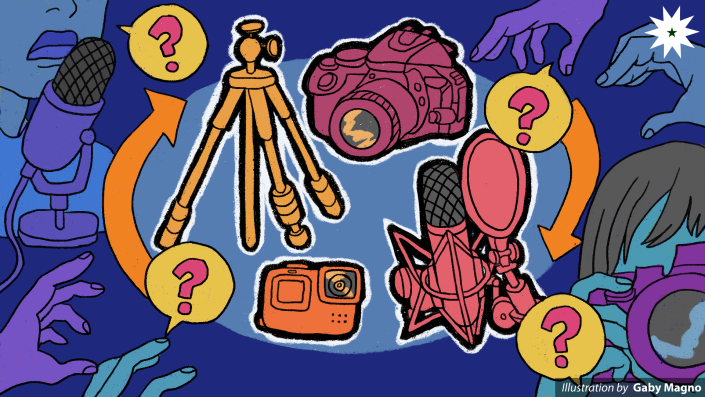Among the services that the University provides to support the students is giving access to borrow necessary equipment for practical course work such as laboratory activities, thesis or research work, and, of course, media or content production.

In the College of Liberal Arts, communication arts (CAM) majors are entitled to such a service, especially those taking major courses like Studio Production or Fundamentals of the Photographic Image that require specific and expensive equipment to accomplish. The existence of this borrowing system is a necessary first step to supporting students in equipment-intensive majors, but there is yet a lot to improve in terms of its accessibility.
CAM students who already have personal access to equipment such as DSLR cameras and tripods are at an advantage—especially during unfortunate scenarios like when students had to provide for themselves in the Audio Production course during the pandemic. Unlike them, those who do not can seek assistance and maximize the laboratory fees they pay by borrowing from the Communication Department equipment room.
But compounding this problem is the fact that not all CAM students are aware that an equipment borrowing service exists. Being a CAM student myself, I only found out about this when our laboratory classes were finally conducted face-to-face. Apart from a few in-class announcements from professors, there is not enough information formally available on this borrowing service, making it difficult for us to access it.
The number of available DSLR cameras is also inadequate to cater to the increase in the population of CAM majors. Oftentimes, especially during midterms or finals, many students run out of camera units even if there are sets reserved and separated for those taking their thesis and those taking their majors. I personally experienced this when we had our finals for the Fundamentals of Publishing course last term as we needed to borrow a DSLR camera but had to wait until there were any available. Although it did not delay our submission, it might have been better if students were able to readily access equipment when needed.
The two University technicians assigned to the whole Department of Communication also take on the burden of assisting numerous students and professors. Simultaneously attending to those who need help in operating the equipment in classrooms and studios, as well as those who are borrowing equipment, is a difficult task to do. Thus, it might be good to look at how to address this and discuss possible solutions such as hiring more personnel, if necessary.
Granted that having an equipment borrowing service is already a privilege that not every college or university has to offer, it does not mean that poor execution is excusable. A part of students’ tuition fee goes to their access to both laboratories and equipment; they should then be able to use them productively.
Providing additional equipment and a centralized source of information, at least through Help Desk Announcements, to orient CAM students about this borrowing system might be a good start in ensuring this. Student awareness of this service and its accessibility should be regarded more so students get to maximize it however they see fit for their courses. I can say, at least for myself, that it is encouraging for students entering equipment-heavy programs to know they get help from their department.
With courses that require CAM students to constantly film, create videos, take photos, and produce content, it is inevitable that we have to borrow and utilize such resources that the University offers. And to better serve them, not only should availability be considered, but also the quality and quantity of the equipment and services.
